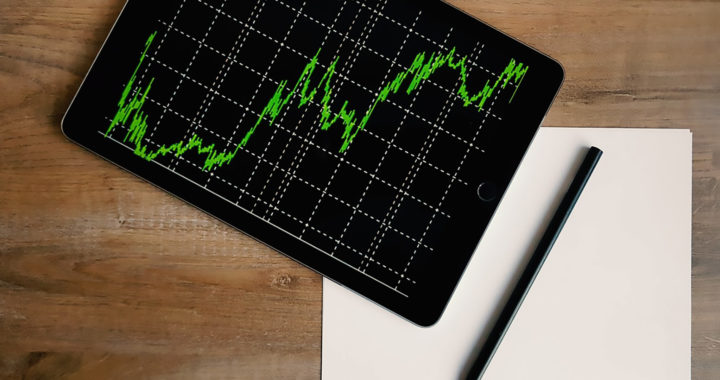There are two ways to make money from the financial markets, especially from financial instruments and assets such as stocks and shares, currencies, precious metals such as gold and silver, other commodities, futures and options contracts, exchange-traded derivatives, and cryptocurrencies, among others. These are through investing and trading.
Both are fundamentally the same. They generally represent the basic definition of investment: the action or process of buying an asset or using money for profit or material gains. Buying assets includes an expectation that they will increase in value in the future.
Investors and traders seek to earn money or generate profits through market participation. Due to this participation, some would argue that they are the lifeblood of the financial markets. The cash that they infuse ensures that the money flows where it is needed the most. However, technically speaking, there is a stark difference between investing and trading.
Investing vs: Trading: What is the Difference?
To understand the difference between investing and trading, as well as the difference between investors and traders, it is important to discuss the specific purpose of each, the duration of the participation of investors and traders, general strategies, their behavior or actions during their participation, and the degree of profit they expect to make. Below is a close comparison between the two in consideration of the aforesaid elements:
Specific Purpose
Investors and traders seek to generate profits. However, the specific purpose of investing is to grow money to hedge against inflation. This is the reason why most investment goal is aimed at building education fund, retirement fund, or business startup capital.
On the other hand, trading is more focused on earning money on a more frequent basis, either as a full-time job or as a way to augment income from an existing job. Similar to an actual job, trading can provide a consistent stream of income when done correctly.
Duration of Participation
Remember that investing centers on growing money to hedge against inflation. Hence, the duration of a particular investment typically lasts from as short as five years for short-term investment goals to 15 years or more for long-term investment goals.
Trading can be done for as long as a particular trader intends. However, when it comes to the specific duration of owning a particular asset, the time frame can span for a month or week, such as in the case of swing trading, and even as short as a day, such as in the case of day trading.
Because of the longer duration of investing, phrases such as “invest and forget” and “buy and hold” are often been used. On the other hand, in the realm of trading, these are not readily applicable and can be impractical to a certain extent.
General Strategies and Principles
Another difference between investing and trading centers on the different strategies employed by investors and traders. Investment strategies generally involve buying and holding a particular asset or different classes of assets for a longer span of time.
The principle of trading revolves around buying and selling of different assets in a short period, and in higher frequency. Traders take advantage of movements in the markets, taking note of highs and lows to make enter and exit positions.
It is important to note that investing is about building wealth through the capital appreciation of purchased and held assets while trading is about making money by buying assets at a lower price and selling it at a higher price within a short period of time.
Specific Behaviors and Actions
Remember that investing generally involves buy-and-hold strategies while trading centers on buy-and-sell strategies. Investing is less complex than trading. True to the “invest and forget” phrase, investors would buy assets and let time do the rest of the work.
Trading can be complex because traders need to constantly monitor the markets. They also need to employ fundamental analysis or technical analysis on a particular asset to better guide them in their buying and selling behaviors and actions.
Profit Expectations
Investors and traders also have different expectations when it comes to the amount of profits they will be generating. In investing, investors look forward to larger returns over a longer period, while in trading, traders take smaller albeit more frequent profits.
Note that investors would also channel larger amounts of money compared to traders. Some investments are one-time, while others involve a scheduled or more frequent infusion of capital. Traders can start off with smaller amounts as part of risk management.
In A Nutshell: The Difference Between Investing and Trading
To summarize the difference between the two, note that investing is about seeking large returns over an extended period through buying and holding to hedge against inflation. Trading maximizes the highs and lows in the market to make enter and exit positions over a shorter time frame to take smaller albeit more frequent profits.
Some of the notable examples of investing include opening and maintaining an Individual Retirement Account, availing 401(K) retirement plan from employers, purchasing stocks from a publicly-traded company, lending money for interests or purchasing bond certificates, purchasing real estate properties, holding cryptocurrencies, and collecting artworks or rare items.
On the other hand, examples of trading include participation in trading platforms that support stocks, forex, commodities, futures and exchange contracts, and derivatives trading. Other examples include making money from cryptocurrency trading by buying and selling different cryptocurrencies, and build-and-sell real estate businesses.
It is also worth mentioning that investing takes advantage of interest, dividends, stock splits, and other indicators of capital appreciation, among others. Investors also ride out downtrends through cost-averaging. Trading attempts to outperform buy-and-hold investing by looking for opportunities from the frequent movements in the financial markets.
